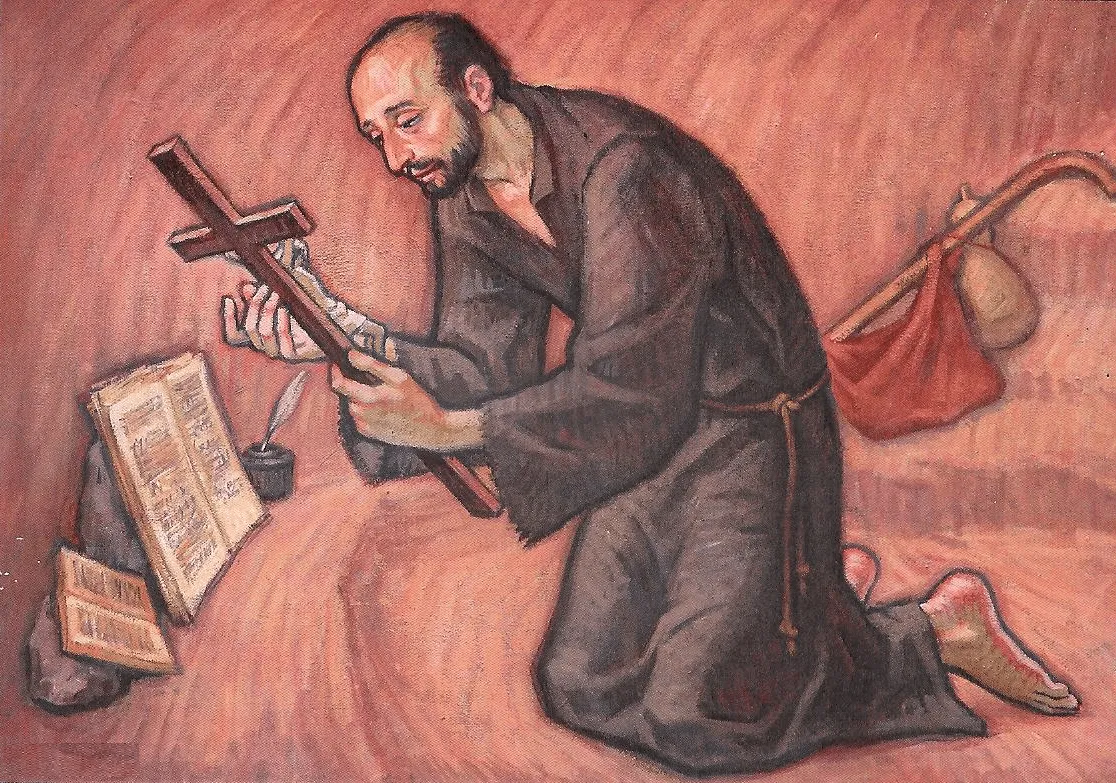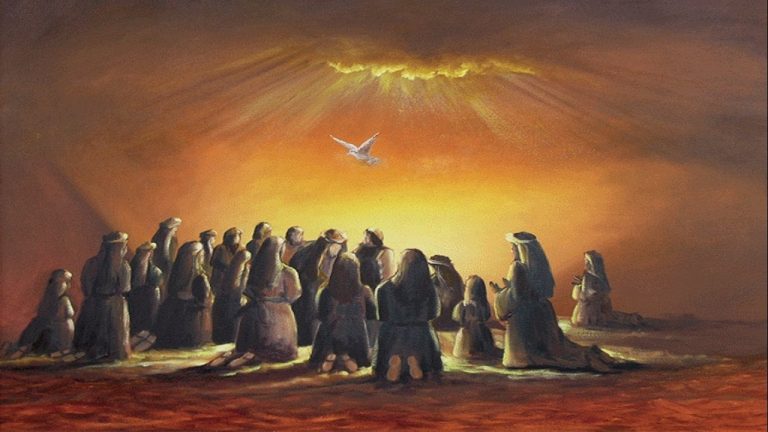Spiritual Exercises of Saint Ignatius of Loyola
The Spiritual Exercises of Saint Ignatius of Loyola constitute an experience that transforms, since they help to reorder our existence to feel within us the invitation that God makes us to live fully. It is customary during Holy Week for certain religious and priests to practice these exercises guided by the method designed by Saint Ignatius of Loyola.
Spiritual Exercises of Saint Ignatius of Loyola
The Spiritual Exercises of Saint Ignatius of Loyola is a book that has been designed to meditate, pray and for the practice of mental exercises with a completion period of 28 to 30 days. The text has about 200 pages and the exercises contemplated therein have been written with the idea of increasing the particular experience of the Catholic faith. Saint Ignatius describes them in his own words:
With this name is understood every way of studying the conscience, of reflecting, of reasoning, of considering; every way of enlisting and disposing the soul, to suppress all confused affections (affections, ambitions,…) with the purpose of seeking and achieving the will of God.
What are the Ignatian Spiritual Exercises?
The Spiritual Exercises of Saint Ignatius of Loyola constitute an ordered series of reflections and contemplations that are born from the deep spiritual experience that Ignatius experiences from his transformation, with the purpose of assisting those who exercise in them to reveal what the divine will is. for his life.
The Ignatian Exercises date back to the Notebook in which Ignatius reviews his spiritual experiences through his visit to the town of Manresa, in which, as described in his Autobiography, he was treated by God in the same way as a school teacher. consider a child.
Ignatius resolves to write this Notebook of the Spiritual Exercises with the aim of collaborating with others, transmitting to them the ideas and feelings that had converted him. For this reason, he projects and outlines them rather as a guide oriented, not so much to the one who practices them, but to the one who preaches them.
The purpose of the Ignatian Spiritual Exercises is to assist the exercitant, to help the practitioner, to understand and appreciate what the Lord expects of him, and to yearn for and choose this. Individually, the Spiritual Exercises are very useful for the organization of daily life according to the divine Will, and even to discover what Vocation God is calling me to, for those who have not yet decided.
Typical Methodology and Exercise Structure
Ideally the exercises were created to be performed in a secluded retreat, whereby those who performed them would not be affected by any distraction. His design also implied that the execution of the exercises would be conducted by a director or spiritual guide (usually Saint Ignatius refers to him as “the one who assigns the exercises”).
The primary purpose seems to have been that they were used as part of the order’s initiation plan. Because of this, they were considered an essential requirement for the initial year of novitiate. Subsequently, other Catholics have put the exercises into practice.
As part of the exercises, the daily instructions included various talks on the nature of the world, human psychology as interpreted by Ignatius, and the link between man and God. Through each day of the exercises, any member of the retreats could read two or three pages of these instructions, and then reflect on their significance and how they could apply them to their particular life.
Later he shares with his spiritual guide what these indications meant for him/her. A relevant peculiarity of the exercises is the requirement to maintain silence throughout them (when leaving bed in the morning, when getting dressed, during meals, during free time, before going to bed), with the exception of the time in which the reflection on a speech or some biblical writing is deliberated, collectively among all the participants.
Private talks are not allowed unless with the spiritual director, with few exceptions. The reason for this practice of silence is to force the person to make a reflection about what he is experiencing in the exercise, so that he meditates deeply. The experience of experiencing these occasions of silence in permanent meditation are also called deserts.
Although the exercises were designed to be performed in a month, there are versions of shorter duration, 3, 7 or 15 days, which have been designed for lay Catholics or others interested in practicing these exercises.
Spiritual Exercises of Saint Ignatius of Loyola: Objectives and Types
The spiritual exercises are shown to us as a horizon to abandon bad habits, better understand one’s own faith and enrich life. To delve into the subject, the following explains what the spiritual exercises of Saint Ignatius of Loyola are useful for.
The Three Objectives of the Exercises
- Suppress my sins, particularly the habitual ones (“confused affections”);
- Inner understanding of Jesus to further adore and follow him;
- Understand the divine will about what I should do in my life.
The Three Forms of Spiritual Restlessness
To perform the exercises it is necessary that the person has some restlessness of the spirit:
- The desire to seek and achieve a deep meaning in life beyond appearances;
- The interest in organizing one’s own existence in the light of the individual encounter with the Lord;
- The will to travel new paths towards Him, and ultimately, achieve Him in all things “,
Additionally, it is suggested that “suitability for internalization and attention to personal analysis in daily life is required”.
The Three Types of Spiritual Exercises
What are the spiritual exercises about? The Exercises are, in particular, a meeting with Jesus. The great preceptor of the Exercises is Jesus and his message. Three types of Exercises are known, according to their duration, and in order of relevance and effectiveness:
- Month-long exercises in some remote place (what Saint Ignatius recommended and used the most).
- Exercises in ordinary life for five or six months. For those who cannot get away from their family or work, and cannot go to a secluded place.
- Exercises of eight days or less in some secluded place.
It’s all in the Bible
Where do they originate from? “There is nothing inventive in the Exercises. What there is has been taken from the Bible, particularly the New Testament, and more specifically from the Gospels.” Is company required to do the Exercises? “A religious or lay person, highly trained in Ignatian spirituality. In ancient times he was called “director” of Exercises. Nowadays he is named “companion”. The Director is still the Holy Spirit.”
In all to love and serve
Why would a company, family or members of an organization with important goals or a positive social mission invest time in spiritual exercises or retreats? “An Ignatian expression would serve to summarize the result of the Exercises: ‘In everything, adore and serve.
Therefore, the Exercises would be very appropriate for members of organizations primarily devoted to the well-being of others. His social mission is very powerful and wonderful. It has to change the lives of others”.
Alternatives?
Are there options to spiritual exercises that non-religious people or people who do not practice any type of religion can do to change their lives internally or approach a search for the transcendental? “An indispensable condition for the exercitant is that he has Christian faith and belief in God. It doesn’t matter if he is Catholic or Protestant. For non-believers, other means should be sought”.
“The Spiritual Exercises are the best options to be able to reflect, feel and understand, so that man can obtain benefit for himself, and to be able to mature and help many more” (Letter from St. Ignatius of Loyola to Fr. Manuel Miona, November 16, 1536) (Huarte 2014: 11)
Theological Teachings of the Exercises
What can be extracted from the teaching of the exercises seems to reveal the Catholic notions of the 16th century, the time during which they were written.
Among such teachings appear support for the Crusades, prayers to Mary, total submission to their superiors, a very intense evangelizing motivation, an impetuous desire to protect Catholic Christianity from the ideals of the Protestant Reformation and the expansion of the Muslim empire that they had under threat the existence and importance of Catholicism, which was also in crisis.
Spiritual Point of View of the Exercises
The exercises are based on the particular experiences of its author, especially those lived in the ten months in which he lived in Manresa as a hermit. They incorporate insights on humility, detachment for the sake of religious life, meditations on one’s own propensity to fall into sin, the perspective that the human soul is permanently oriented in two directions: towards being a saint or towards being a sinner.
Consistent with Catholic doctrine, the exercises make many allusions to the conviction that man’s highest goal is to exalt God and not himself. For this purpose various illustrations are given of how one can master the indulging of one’s ‘lower’ desires and at the same time, how one can find a means of redirecting one’s energies towards the attainment of the ‘higher’ purpose of existence.
Modern Applications of the Spiritual Exercises
Even today, the Spiritual Exercises constitute an important part of the training period of the novitiate of the Catholic order of the members of the Society of Jesus. In addition to this, numerous Jesuit work programs around the world offer retreats to the general public for whom the exercises are intended.
Taking advantage of the benefits of current technology, the so-called Exercises in Daily Life have been launched, which, continuing point 192 of the Exercises of Saint Ignatius, are consecrated so that the person can perform their Spiritual Exercises online. as he goes about his daily life.
Who was Saint Ignatius of Loyola?
Born in Loyola, Spain, around October 23, 1491, with the name Ignacio López de Loyola, he served as a soldier and later as a religious. Later in life he emerged as a religious leader through the Counter Reformation. His dedication to the Catholic Church was characterized by his total submission to the pope.
He was the creator of the Society of Jesus, which he headed and made prosperous to the point that it came to be made up of more than a thousand members in more than a hundred establishments, most of them schools and houses of education, distributed in a dozen provinces at the time of his death in Rome on July 31, 1556.
His Spiritual Exercises were published in 1548, and had a particular influence on later spirituality as an instrument of lucidity. Jesse Lyman Hurlbut, a Methodist, considered Ignatius of Loyola one of the most eminent and influential figures of the 16th century. He was canonized by the Catholic Church in 1622, and Pius XI proclaimed him patron saint of spiritual exercises in 1922.
By May 1521, when he was thirty years old, he was wounded in the Battle of Pamplona while defending the city from the French army of Henry II of Navarre. This event would have determination in his life, since the reading of religious texts through his recovery would guide him to delve into the Catholic faith and the emulation of the saints.
At that time, he planned to make a pilgrimage to Jerusalem, for which he first needed to go to Rome, but beforehand he would make a stop in Montserrat and Manresa, where he began the development of his Spiritual Exercises, the foundation of his spirituality.
Returning from the Holy Land, he began his studies and the practice of preaching, based on the method of his Exercises. Such activities were considered suspicious and he was described as heterodox and even came to be prosecuted on different occasions. After closing the doors to preaching, he decided to continue his studies in Paris, in which he learned philosophy having Pedro Fabro and Francisco Javier as companions, and others.
Ignatius and his colleagues ended up taking a vow of poverty, and started the Society of Jesus, later deciding to make a pilgrimage to Jerusalem, but this effort could not be consummated and in the end they chose to place themselves at the order of the pope. Ignatius went to Rome in the company of Pedro Fabro and Diego Laínez, noticing throughout the trip a multiplicity of spiritual feelings and a particular confidence that the Lord would favor them in said city.

Hello! Let me enthusiastically introduce myself as a dedicated blogger fueled by an intense passion for meticulously crafting insightful and well-researched blogs. My mission revolves around providing you, dear readers, with a veritable treasure trove of invaluable information.







